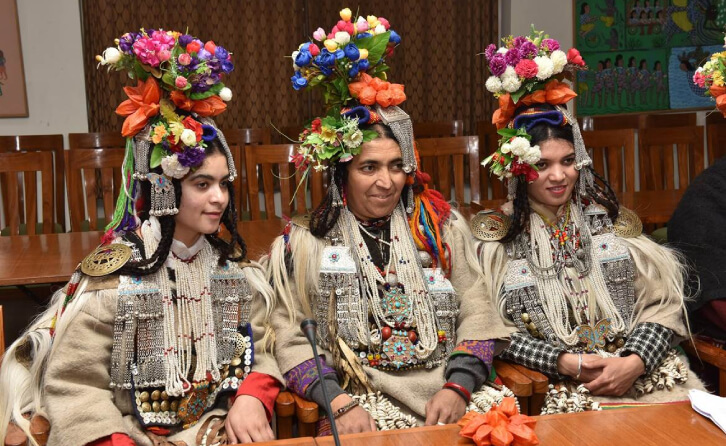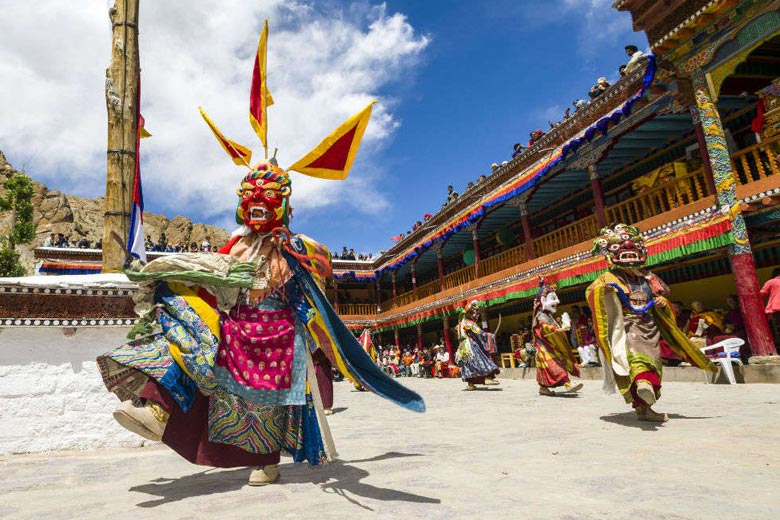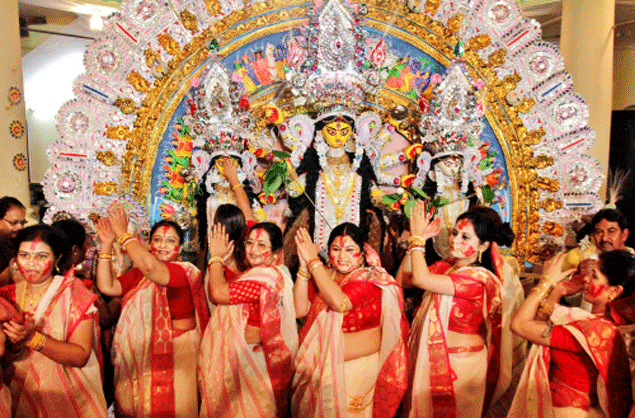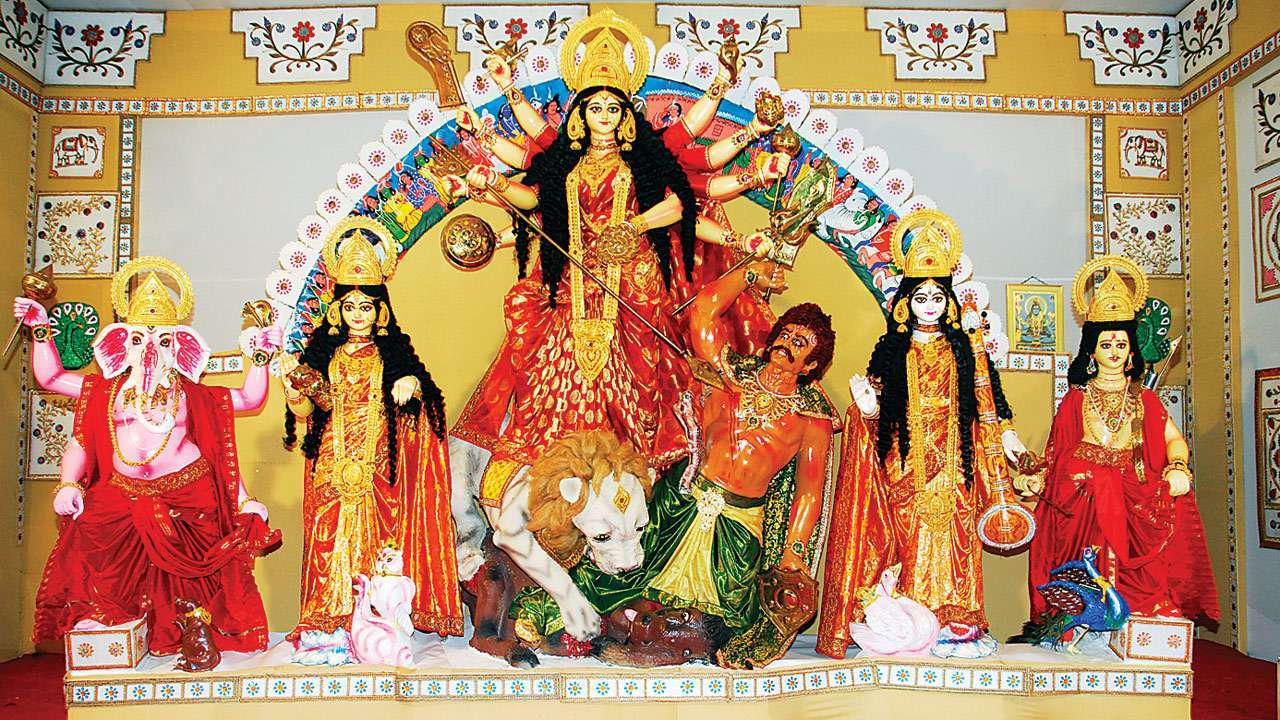 Art And Culture Of Ladakh And West Bengal
Art And Culture Of Ladakh And West Bengal

 Art And Culture Of Ladakh And West Bengal
Art And Culture Of Ladakh And West Bengal


The main religion of Ladakh is Buddhism though some of the areas are also dominated by the Muslims and the Christians. The culture of the region is strongly influenced by the Buddhism religion ant the main feature of this religion is the abundance of Gompas or monasteries in the region of Ladakh. The main languages spoken in Ladakh are Ladakhi and Balti which are supposed to be Tibetan dialects.
The locals of Ladakh enjoy various fairs and festivals and enjoy merrily with each other. The most popular festival here is Hemis which is held in the month of June and marks the celebration of the birth of Guru Padmasambhava. Other important festivals are the Dosmoche Festival, Losar Festival, Sindhu Darshan Festival and Ladakh Festival


The men in Ladakh wear a long woollen robe which is known as Goucha in their local language. Women wear a similar kind of robe which is called Kuntop & Bok. Perak, a long hat, is also worn by both men & women in Ladakh.
Ladakh has its fair share of arts & crafts. Items for domestic & religious purposes like chang pots, tea, teacup stands, ladles & bowls are manufactured locally. Local blacksmiths called gara produce items used for everyday purposes, from cooking pots to agricultural tools. Pattu, which is a rough clothing material is made from wool which is locally produced by women on drop spindles & woven by weavers on portable looms. Baskets, for example, are made out of willow twigs. Wood items, like carved lintels for the houses, low carved tables that are found in every living room in Ladakh & pillars are also manufactured locally.
 Ladakh has a rich cultural heritage, and that includes its folk music & dance. One of the most famous dance forms
in Ladakh is Chham, or the mask dances, which often signify the victory of good over evil.
The chham is mostly performed by monks in monasteries, which is often accompanied by traditional Tibetan
instruments. The other famous dances in Ladakh are lharna, jabro, spao, shondol, chartses & mentok stanmo.
The folk music of Ladakh, which is heavily influenced by Tibetan music, involves religious chanting.
These chants are holy recitations of sacred texts, and an example of that is Yang chanting, which is accompanied
by resonant drums & low sustained syllables.
Ladakh has a rich cultural heritage, and that includes its folk music & dance. One of the most famous dance forms
in Ladakh is Chham, or the mask dances, which often signify the victory of good over evil.
The chham is mostly performed by monks in monasteries, which is often accompanied by traditional Tibetan
instruments. The other famous dances in Ladakh are lharna, jabro, spao, shondol, chartses & mentok stanmo.
The folk music of Ladakh, which is heavily influenced by Tibetan music, involves religious chanting.
These chants are holy recitations of sacred texts, and an example of that is Yang chanting, which is accompanied
by resonant drums & low sustained syllables.

The largest religions practised in Bengal are Islam and Hinduism. Bengali, the main language of the state, is spoken by much of the population. Other languages include Hindi, Santali, Urdu (primarily the language of Muslims), and Nepali (spoken largely in the area of Darjiling). A small number of people speak Kurukh, the language of the Oraon indigenous group.
As a state which celebrates unity in diversity, the state has several religions and hence fosters a plethora of festivals all year round. The Durga Pooja, which celebrates the victory of Goddess Durga, is one of the most colorful festivals in the state. Poila Bhoishak is another very popular festival that celebrates the Bengali New year. The day is quite special for the whole state and is celebrated with abundant joy, as it marks a new beginning. The state also celebrates Christmas and Eid-ul-Fitr, with as much pomp and joy.


In West Bengal, women usually dress up in a uniquely draped saree with broad borders. There a variety of sarees prevalent in West Bengal including the Dhaka Jamnadi sarees, Garad-Koirad, Baluchari Sarees among others. Of these, the Garad-Koirad sarees are the most popular and are worn on religious occasions and at weddings. Men usually wear Panjabi and Dhoti, which is unique to Bengal.
There are a variety of handicrafts and art that are made in Bengal. Each village in the state has its own distinct handicraft, which is quite different from the other village. The most notable feature of the handicrafts is that apart from being a symbol of Bengals’ history and culture, they are also Eco-friendly. Some of them, like the Dokhra metal casting, is said to have been preserved for centuries and is said to be one of the oldest forms of metal casting. Bankura district boasts of highly decorated terracotta tiles present in certain temples.
 The music of Bengal is a pleasure to listen to for anyone and everyone. It is indeed the jewel
of Bengal’s heritage. The traditional Baul singing is perhaps the most popular of all. Mostly sung in
praise of God with utmost reverence and focus, the singers can make anyone spellbound with their soothing music.
During the performance, the performers shut out the entire outer world by closing their eyes and seem to be lost
in a trance. Chhau, a very prominent tribal dance form of West Bengal, narrates stories from Indian epics. The performers
wear colorful and vibrant masks, which helps them to portray different characters and convey the stories effectively.
The music of Bengal is a pleasure to listen to for anyone and everyone. It is indeed the jewel
of Bengal’s heritage. The traditional Baul singing is perhaps the most popular of all. Mostly sung in
praise of God with utmost reverence and focus, the singers can make anyone spellbound with their soothing music.
During the performance, the performers shut out the entire outer world by closing their eyes and seem to be lost
in a trance. Chhau, a very prominent tribal dance form of West Bengal, narrates stories from Indian epics. The performers
wear colorful and vibrant masks, which helps them to portray different characters and convey the stories effectively.